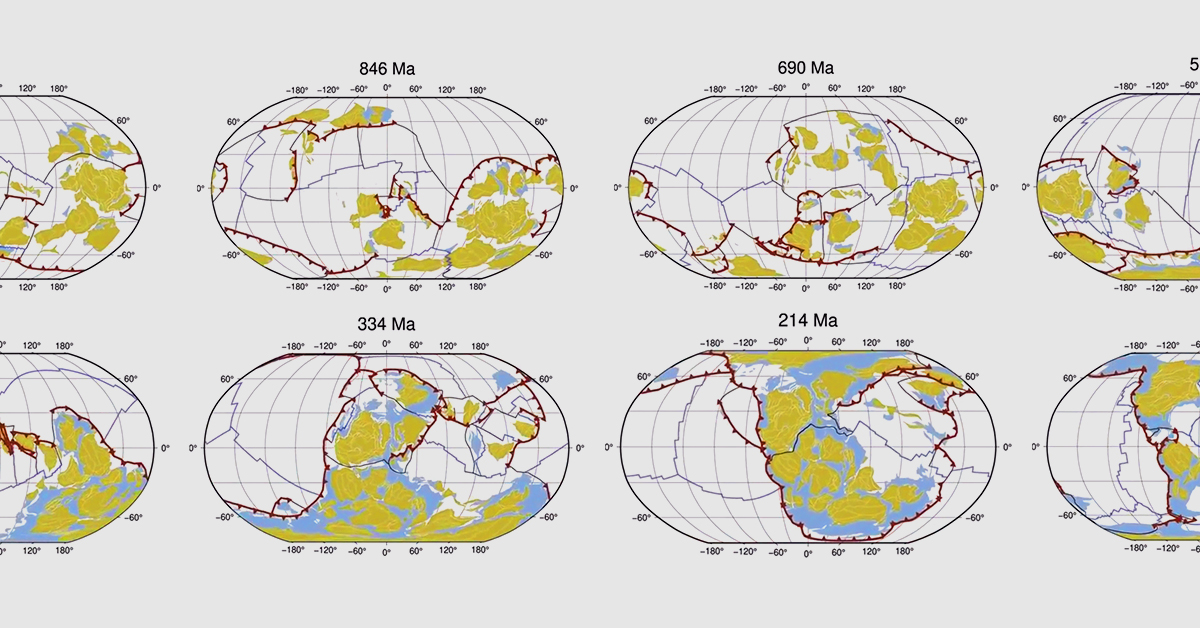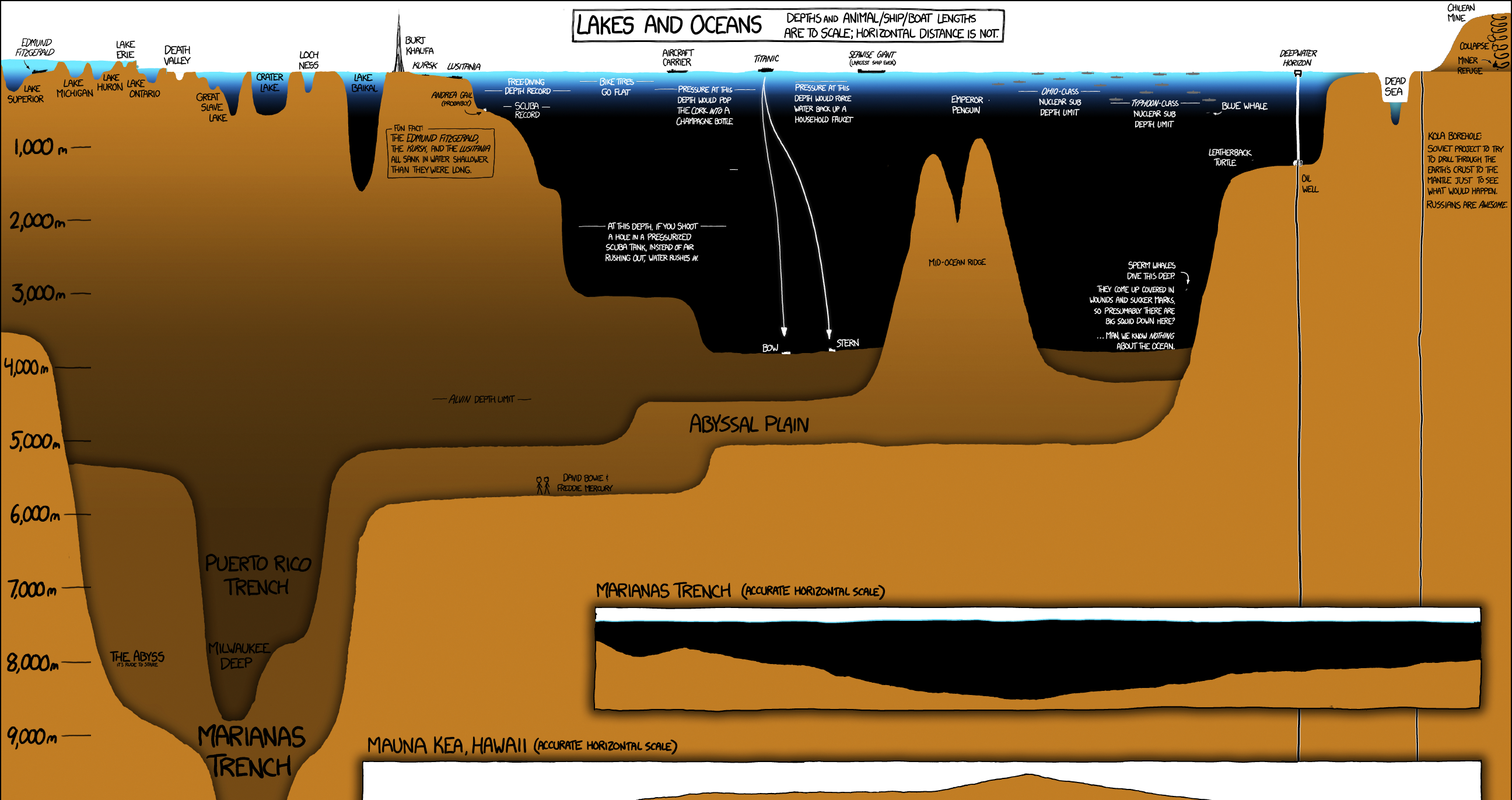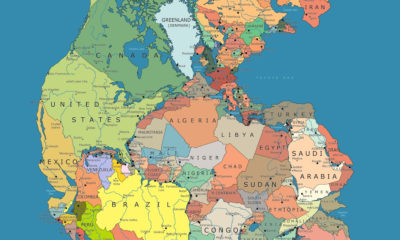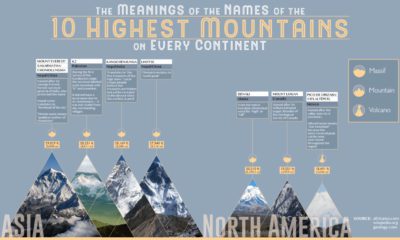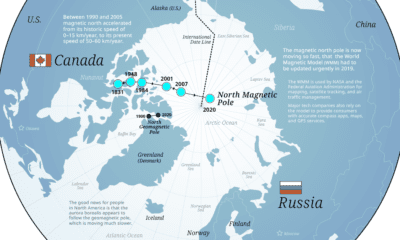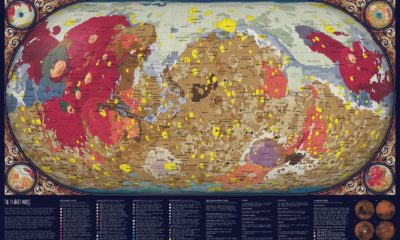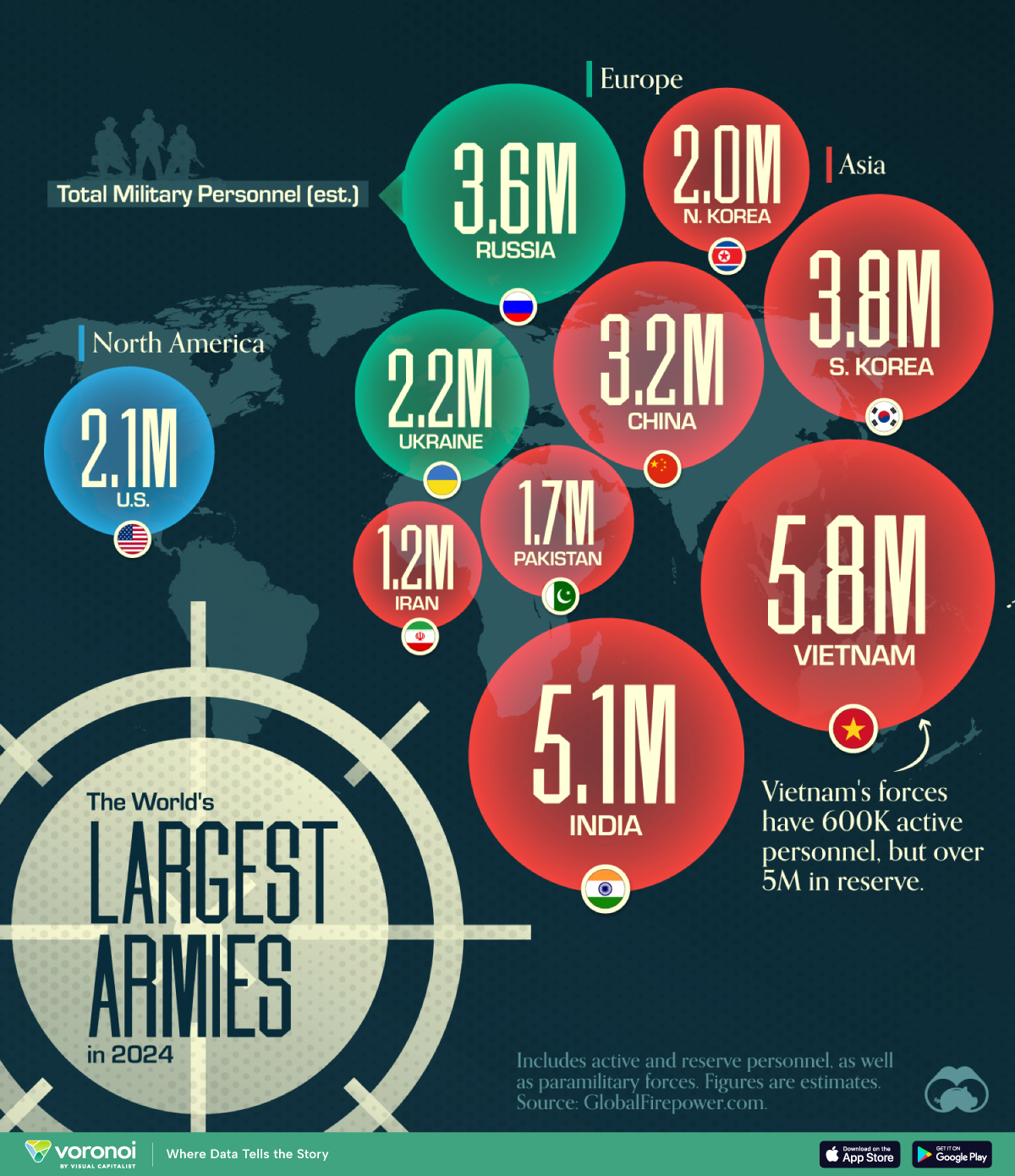Maps
1 Billion Years of Tectonic Plate Movement in 40 Seconds
https://player.vimeo.com/api/player.js1 Billion Years of Tectonic Plate Movement in 40 Seconds
According to plate tectonic theory, the Earth’s surface is made up of slabs of rock that are slowly shifting right under our feet.
Because of this constant movement, today’s Earth looks a lot different from what it did millions of years ago. Today’s animation looks at the Earth’s tectonic plate movement from 1 ga (geological time for 1 billion years ago) to the present-day, via EarthByte on YouTube.
Editor’s note: The video starts at time 1,000 ma (1,000 million years ago), and ticks down at the rate of about 25 million years every second.
The Emergence of Plate Tectonic Theory
Plate tectonics is a relatively new theory—in fact, according to National Geographic, it hadn’t become popular until the 1960s. However, the concept of continental movement was brewing long before it became widely accepted.
In 1912, German scientist Alfred Wegener proposed a theory he called continental drift. According to Wegener’s theory, Earth’s continents once formed a single, giant landmass, which he called Pangaea.
Over millions of years, Pangaea slowly broke apart, eventually forming the continents as they are today. Wegener believed this continental drift explained why the borders of South America and Africa looked like matching puzzle pieces. He also pointed to similar rock formations and fossils on these two continents as proof to back his theory.
Initially, the scientific community wasn’t on board with the theory of continental drift. But as more data emerged over the years, including research on seafloor spreading, the theory started to gain traction.
The Supercontinent Cycle
Nowadays, it’s believed that Pangea was just one of several supercontinents to mass together (and break apart) over the course of geological history.
The exact number of supercontinents is largely debated, but according to the Encylopedia of Geology, here are five (including Pangea) that are widely recognized:
- Kenorland: 2.7-2.5 billion years ago
- Nuna/Columbia: 1.6-1.4 billion years ago
- Rodinia: 950–800 million years ago
- Pannotia: 620-580 million years ago
- Pangea: 325-175 million years ago
According to the theory, this cycle of breaking apart and coming together happens because of subduction, which occurs when tectonic plates converge with one another.
The supercontinent cycle also ties into ocean formation. The below example of the Wilson Cycle specifically keys in on how the Atlantic Ocean, and its predecessor, the Iapetus Ocean, were formed as supercontinents drifted apart:
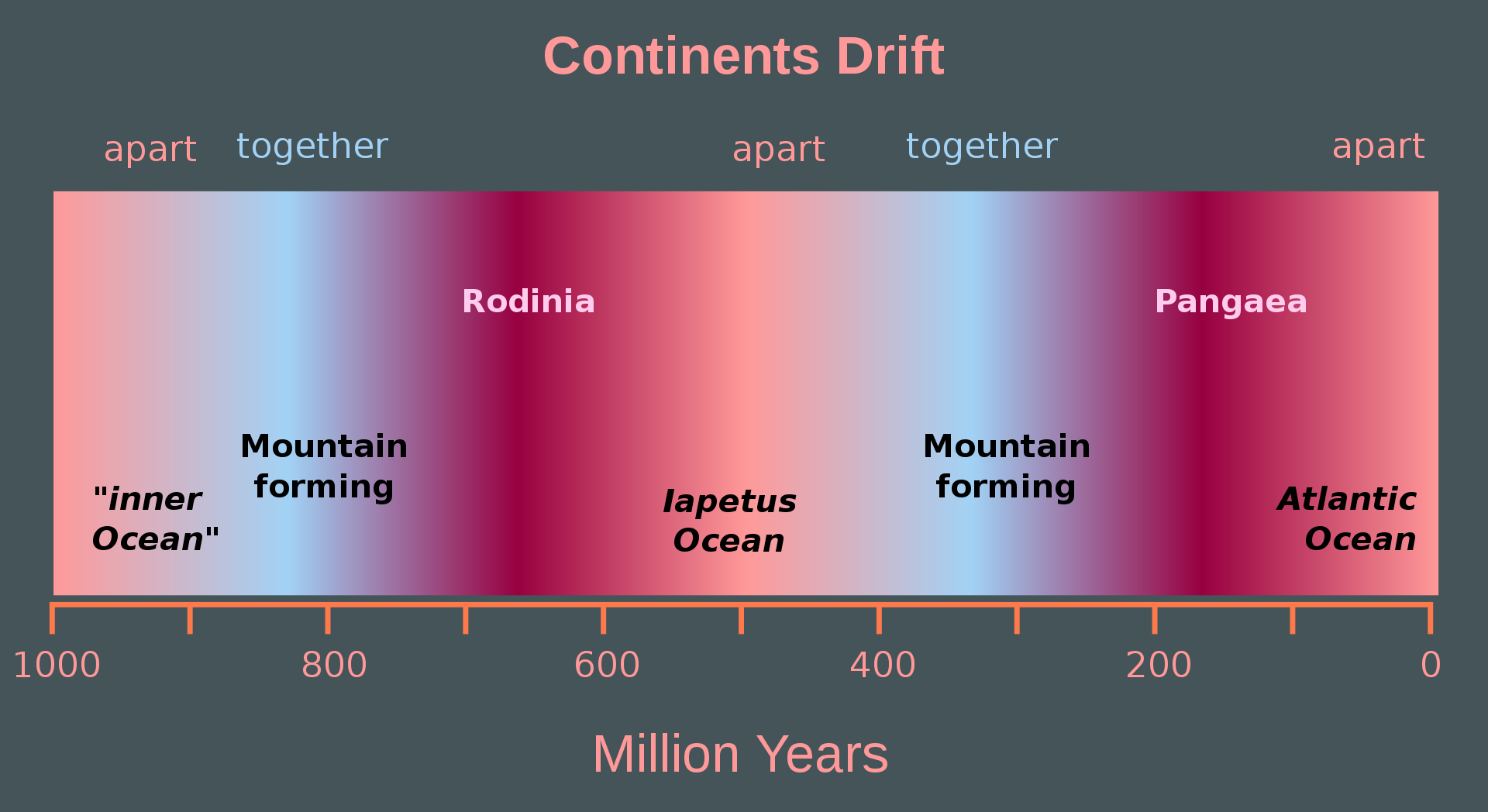
Source: Hannes Grobe
The Importance of Plate Tectonics
Plate tectonics has been a game-changer for geologists. The theory has helped to explain tons of unanswered geological questions, assisting scientists in understanding how volcanoes, mountains, and ocean ridges are formed.
It’s also valuable for the oil and gas industry since it explains how sedimentary basins were created, allowing geologists and engineers to target and locate vast oil reserves.
Since the theory of plate tectonics is relatively new, there’s still a lot to be discovered in this field of research. However, in March 2021, a report was published in Earth-Science Reviews that, for the first time, visualized a continuous plate model that shows how Earth’s plates have shifted over the last billion years.
The video above visualizes this particular report and accurately depicts the Earth’s tectonic plates’ movement or the observed shift in Earth’s tectonic plates over the years.
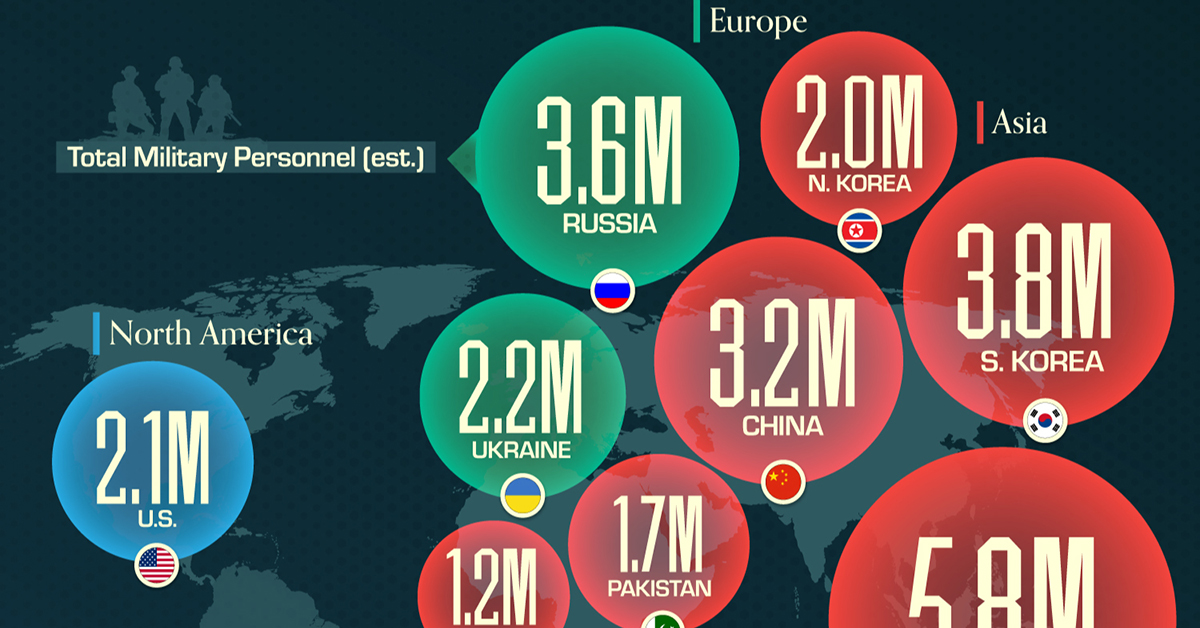
Mapped: The World’s Largest Armies in 2024
This was originally posted on our Voronoi app. Download the app for free on iOS or Android and discover incredible data-driven charts from a variety of trusted sources.
Despite being considered the biggest military force in the world, the United States doesn’t have the largest army in terms of personnel.
This graphic shows the top 10 countries by military personnel as of May 2024, including active and reserve personnel, as well as paramilitary forces. It is based on estimates from GlobalFirepower.com.
Vietnam, India, and South Korea Have the Biggest Armies
China has the largest standing army, with over 2 million active personnel. With increasing defense spending over the last decades, the country also ranks third in the number of tanks and second in the number of aircraft carriers in service.
When reserve personnel are included, however, the Chinese military falls behind those of Vietnam, India, South Korea, and Russia.
Vietnam’s forces include 600,000 active personnel and over 5 million in reserve. This is because Vietnam, along with countries like South Korea and Israel, has a standing policy of conscription for young adults.
| Country | Total Military Personnel (est.) | Region |
|---|---|---|
| 🇻🇳 Vietnam | 5.8M | Asia |
| 🇮🇳 India | 5.1M | Asia |
| 🇰🇷 South Korea | 3.8M | Asia |
| 🇷🇺 Russia | 3.6M | Europe/Asia |
| 🇨🇳 China | 3.2M | Asia |
| 🇺🇦 Ukraine | 2.2M | Europe |
| 🇺🇸 United States | 2.1M | North America |
| 🇰🇵 North Korea | 2.0M | Asia |
| 🇵🇰 Pakistan | 1.7M | Asia |
| 🇮🇷 Iran | 1.2M | Middle East |
Interestingly, the 2022 Russian invasion of Ukraine resulted in a massive increase in Ukrainian personnel numbers. Active personnel rose from around 170,000 in 2016 to over 900,000.
Despite not having the largest army, the U.S. accounts for almost 40% of global military expenditures, with its 2022 spending totaling $877 billion.
China ranked second in absolute terms, accounting for another 13% of world military expenditure at $292 billion.
-

 Maps7 days ago
Maps7 days agoMap: Where Are America’s Largest Landfills?
-

 Finance2 weeks ago
Finance2 weeks agoRanked: The World’s 50 Largest Private Equity Firms
-

 Markets2 weeks ago
Markets2 weeks agoMapped: The 10 U.S. States With the Lowest Real GDP Growth
-

 Economy2 weeks ago
Economy2 weeks agoComparing New and Current U.S. Tariffs on Chinese Imports
-

 China2 weeks ago
China2 weeks agoWhich Countries Have the Most Economic Influence in Southeast Asia?
-

 United States2 weeks ago
United States2 weeks agoThe Top 25 Nationalities of U.S. Immigrants
-

 Countries2 weeks ago
Countries2 weeks agoRanked: Countries Where Youth are the Most Unhappy, Relative to Older Generations
-

 Technology2 weeks ago
Technology2 weeks agoVisualizing the 5 Most Common Cybersecurity Mistakes

